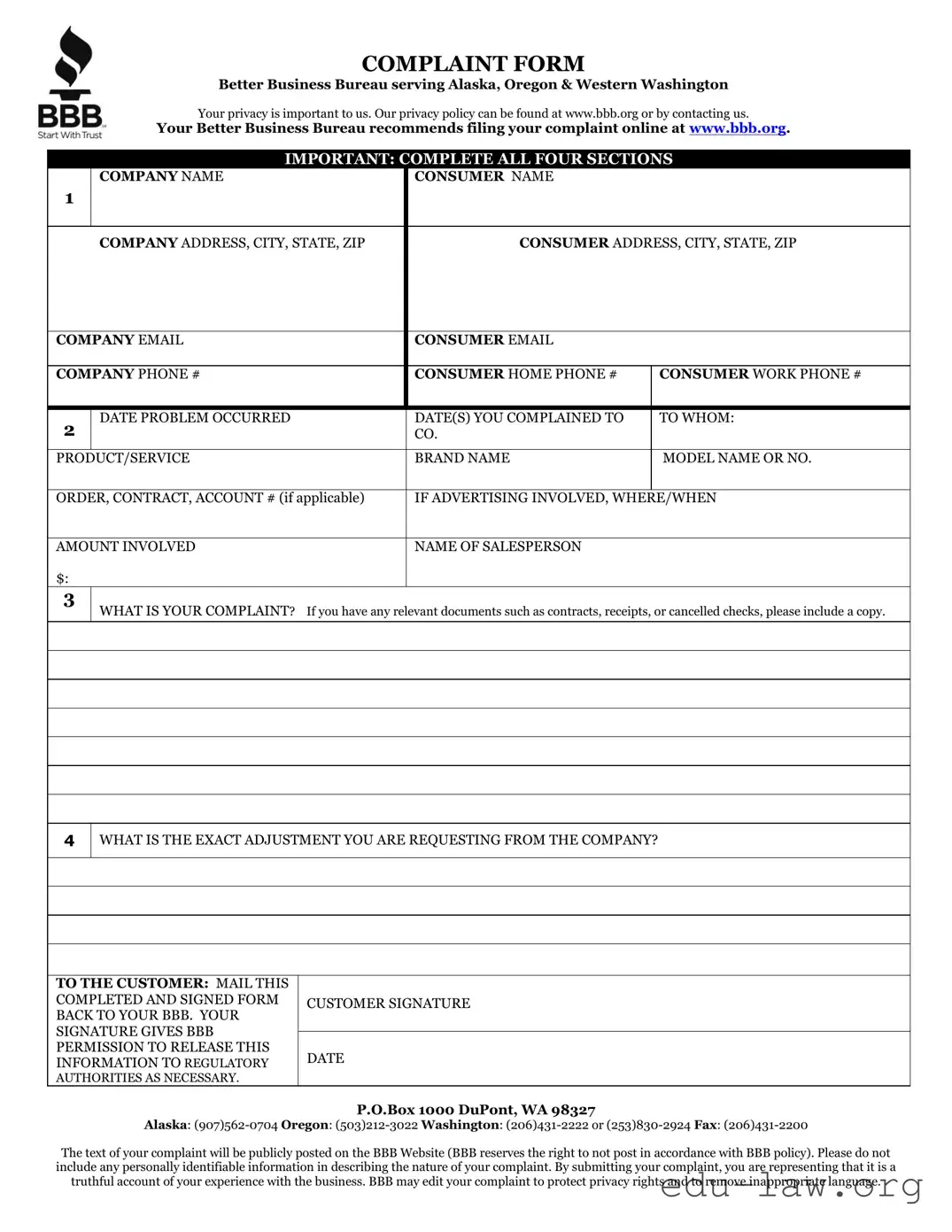What is the BBB Complaint form?
The BBB Complaint form is a tool used to file formal complaints against businesses that are members of the Better Business Bureau (BBB). This form allows consumers to express their concerns and seek resolution for various issues, such as poor service, faulty products, or misleading advertising. Utilizing the complaint form is an important step in holding businesses accountable for their practices.
Who can use the BBB Complaint form?
Any consumer who has experienced an issue with a BBB-accredited business can use the complaint form. This includes individuals who have purchased products, received services, or engaged with a business in any transactional capacity. The process is designed to give consumers a voice and support them in seeking redress.
How do I access the BBB Complaint form?
You can access the BBB Complaint form by visiting the official Better Business Bureau website. There, you will find a dedicated section for complaints. Following the provided prompts will guide you through the process of filling out the form online or, in some cases, downloading a paper version to complete and mail in.
What information do I need to provide in the form?
When filling out the BBB Complaint form, you will need to provide specific information about yourself and the business involved. This includes your contact details, the name and address of the business, a description of the issue you're facing, and any relevant documentation supporting your claim. Clear and detailed descriptions will help the BBB understand the situation better.
Is there a fee to file a complaint with the BBB?
No, filing a complaint with the BBB is free of charge. The organization is committed to assisting consumers without imposing fees for using their services. This accessibility encourages more individuals to report issues, contributing to better business practices overall.
What happens after I submit my complaint?
After you submit your complaint, the BBB will review it and forward it to the business in question. The business typically has 14 days to respond to your complaint. If they do not respond within this timeframe, the BBB may take further steps to facilitate communication. You will receive updates on the status of your complaint throughout the process.
Can I track the status of my complaint?
Yes, you can track the status of your complaint by logging into your BBB account, if you created one when filing. Regular updates will inform you about the response from the business and any actions taken by the BBB on your behalf. This feature helps keep you informed and engaged in the resolution process.
What if I don’t receive a response from the business?
If the business fails to respond to your complaint, you are encouraged to follow up with the BBB. They have protocols in place to handle unresponsive companies, which may include further outreach or escalation of the complaint. It is crucial to keep communication lines open and document any interactions you have.
Can I withdraw my complaint once it’s filed?
Yes, you have the option to withdraw your complaint after it has been filed. If you choose to do so, contact the BBB through the appropriate channels provided on their website. You should have a clear reason for withdrawal, which may involve resolving the issue directly with the business.
Will my personal information be kept confidential?
The BBB takes consumer privacy seriously. While your information may be shared with the business involved to facilitate resolution, your personal details are not disclosed to the public. You can feel secure knowing that your confidentiality is a priority during the complaint process.

